I’m a bit of a minimalist, and try to keep my luggage as light as possible. Luggage tends to sit pretty high up on the bike, raising its centre of gravity. This results in worse handling on the trail and, due to the longer lever from the COG to the ground, more energy required to pick up the bike after a tumble. Either way, tackling boulder strewn riverbeds or technical trails is much more enjoyable with a lighter bike.
The priority is to keep moving and I will sacrifice personal comfort for a functioning bike. I’d rather carry more spare parts instead of camping luxuries. Camping essentials should be as light as possible. I do not go to extremes though, like drilling holes into my toothbrush or welding custom spanners and such. Having said that, I must admit to having an irreplaceable MSR titanium spoon from my climbing days.
In addition to weight, another issue to consider is equipment volume. Careless selection of especially camping gear quickly transforms the gnarly adventurer into something akin a Cambodian street vendor. Anyhow, I try to get away with as little volume as I can. It helps keeping the bike streamlined and the centre of gravity lower.
Sleeping pads are light, but can add a lot of volume into the luggage. In terms of reliability, I’d rather carry a foam pad, but they are just too large. So I use an inflatable pad and carry a repair kit. Instead of a full length pad, I use a 3/4 length narrow self-inflating Thermarest. It packs into much less space than a full size pad. The main function of the pad is to insulate the torso from the ground. I use my Gore-Tex riding gear and fleece mid layers to insulate my feet and head from the ground.
For sleeping bags, I prefer down over synthetic. Down bags are lighter and pack into smaller space. The snag with down is that you have to take extra care to keep it dry. For extremely humid conditions a synthetic bag would probably be the sensible choice.
Adventure riding off-road and in technical terrain is energy consuming and hard work for the body. Getting a good night’s sleep between days on the trails is essential for recovery. Being too cold or too warm will make it less efficient. I prefer to select a lighter sleeping bag and use my mid layers for extra insulation if necessary. My summer bag is a Marmot Always Summer which is rated at 6.3°C/ 1.5°C comfort/low. I’ve used it in as cold as -2°C. For winter I use a The North Face Blue Kazoo with a comfort rating of -10°C.
I usually carry a Sierra Designs Clip Flashlight solo tent. It weighs just over a kilogram when it’s dry. I rarely use it in cold weather, when temperatures are too low for insects to survive. Another option for when the bloodsuckers are out of business would be a bivouac bag or a survival blanket. Anything to keep you dry in case it rains.
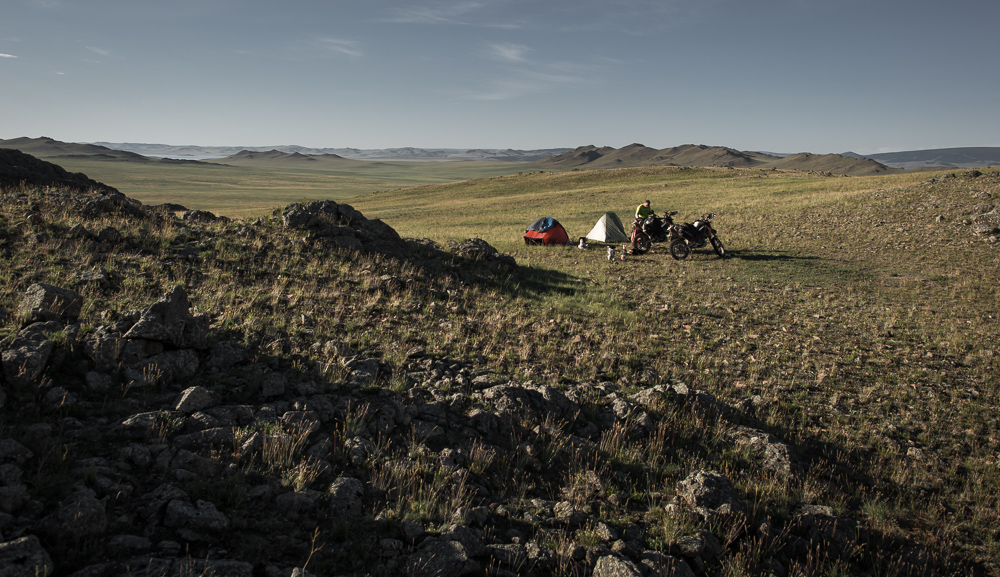
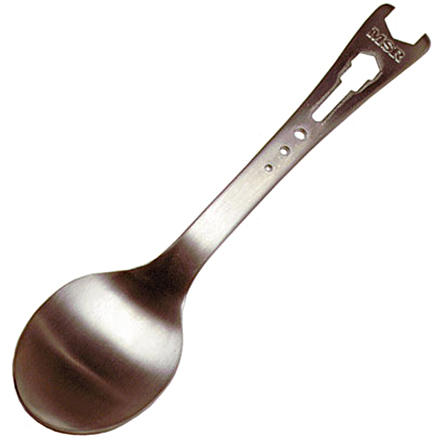
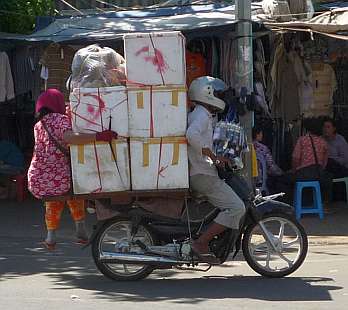

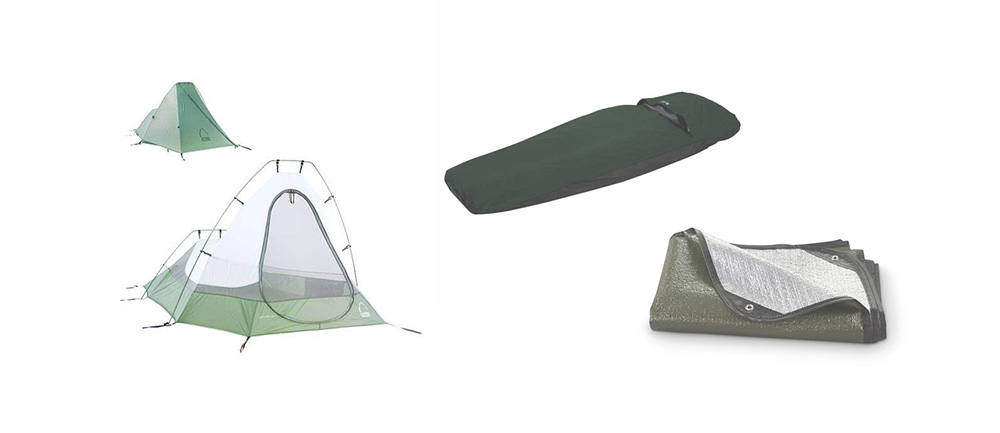
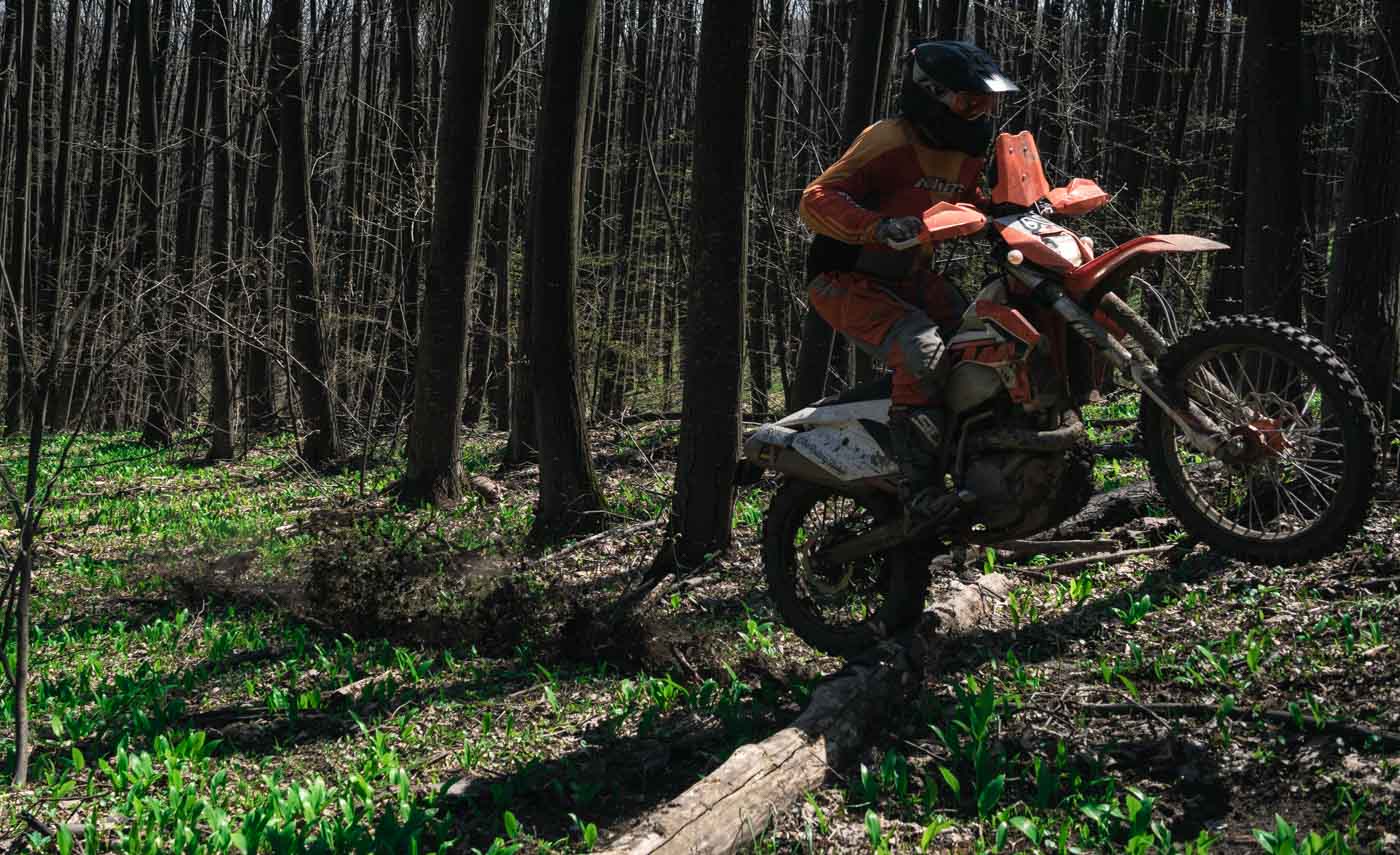
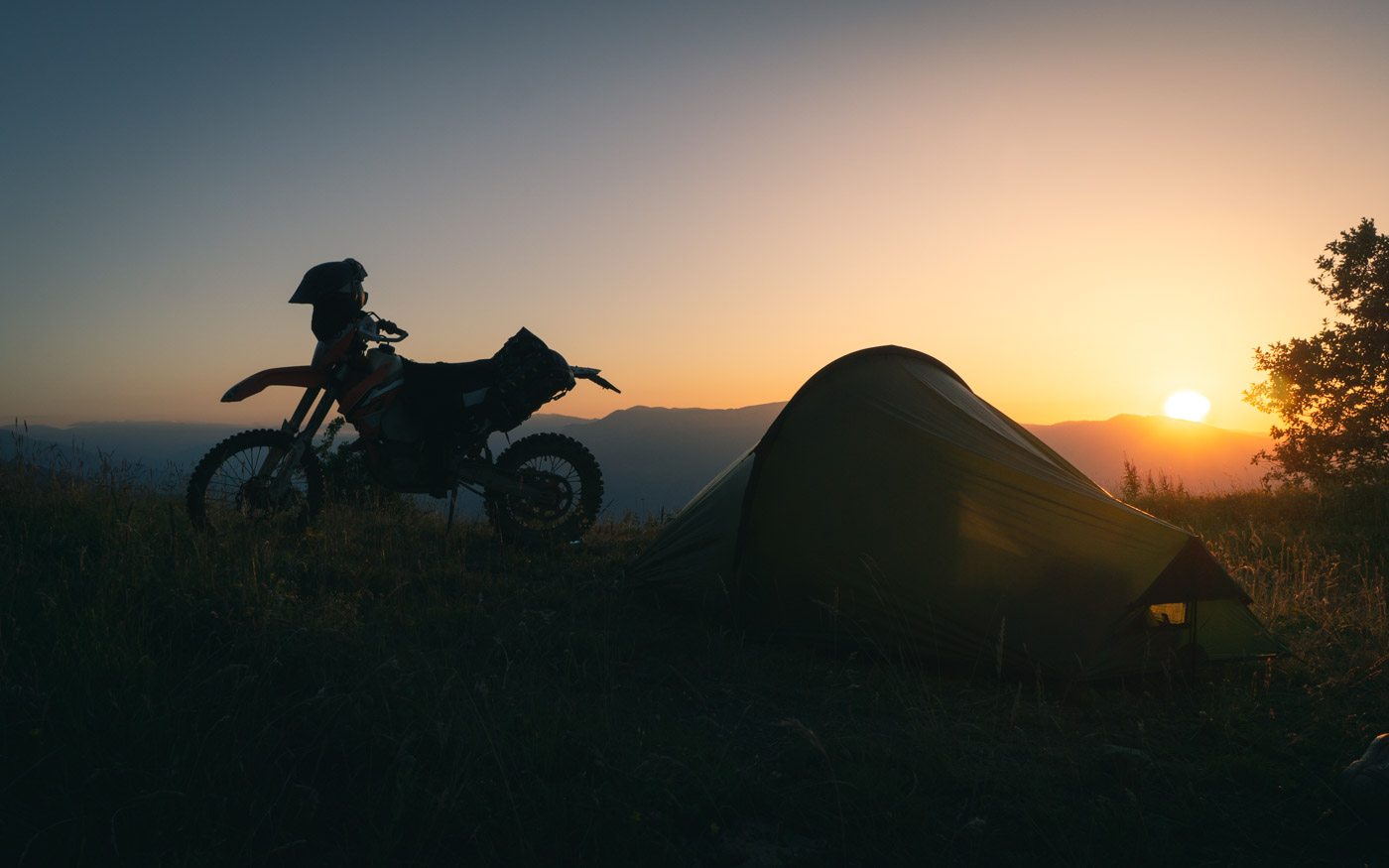
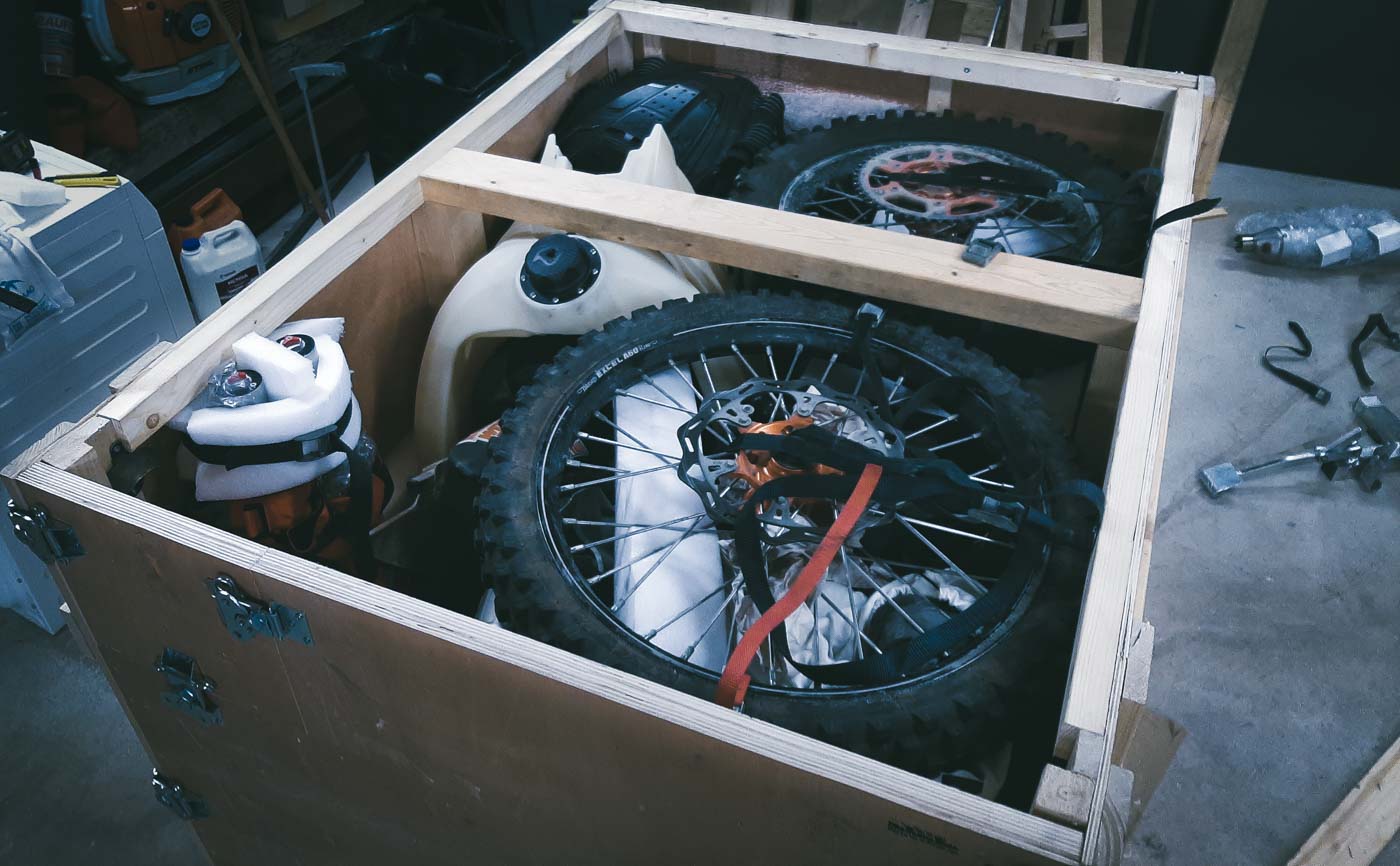
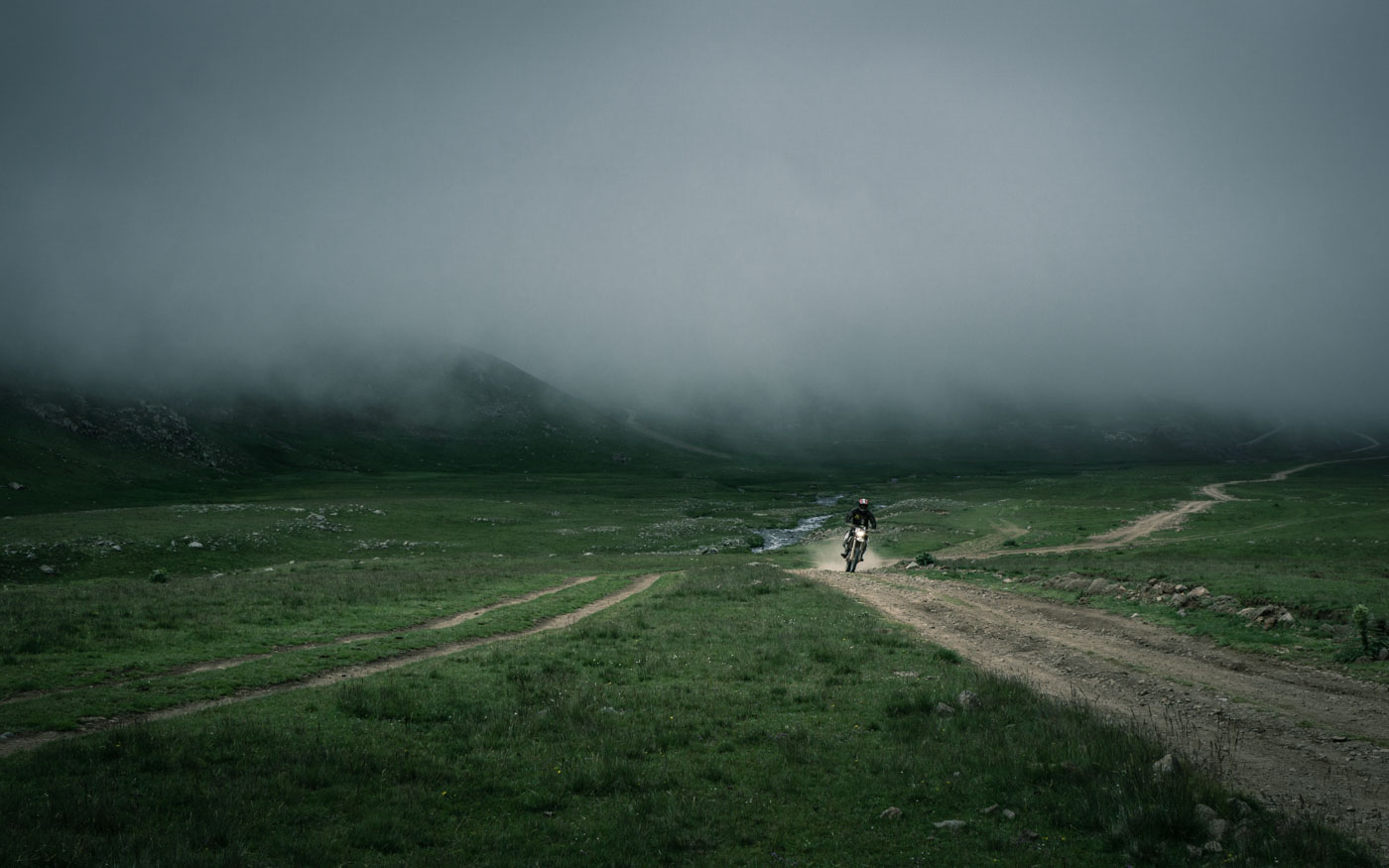
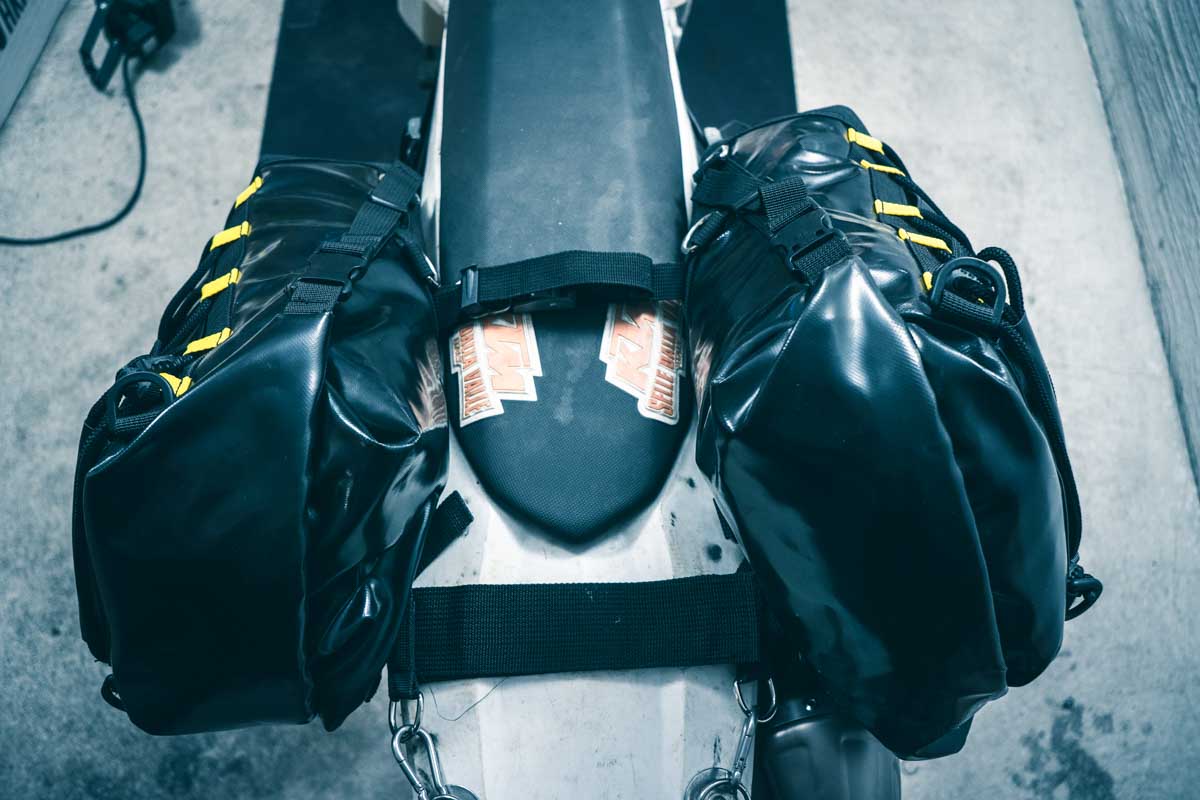
For my adventure rides I use an Exped Synmat 7UL sleeping mat. I find it much more comfortable than a Thermarest, and smaller when packed too.
I believe you’re correct James, the Thermarest is not particularly comfortable. The Exped Synmat is also lighter and packs into smaller space. How about wear? Have you had any punctures? I’ve had my Thermarest for about ten years and have had two punctures thus far.
Were I to get a new inflatable sleeping pad now, I’d most likely get an Exped Synmat UL or something similar.
No punctures yet, though the the last one I had, a Downmat, came loose and dropped into the rear wheel, to be torn to shreds… The mats do come with a puncture repair kit in the bag if needed.
You mentioned that you rarely use the tent in cold weather. What do you do instead when out in the wilderness?
Hi Carl,
We’re quite lucky in Finland to have permanent lean-to shelters provided by the forest ministry, so I use them when I can. If there’s no risk of rain, I’ll sleep under the stars. Having said that, I normally carry a survival blanket I use as a shelter if need be.
Lean-to shelter:
Shelter with survival blanket.
i am a bit of a 5 star camper 🙂
1st star; for two people i take a 3 people tent
2nd star; mattress and sleeping bag with down filling (hmmmm)
3rd star; mocca machine for good coffee (hmmmm x 2)
4th star; folding chair (yes you are read right)
5th star; bio lite camp stove and grill (bbq rules!)
5+ star; laptop or iPad with movies
this what i take when i am with my wife on tour…
now this is what i take when alone on tour
down mattress and waterproof sleeping bag
gas stove
mocca machine
folding chair
not to forget!! swiss army knife
cheers rene
just got my downmat
exped downm T9LW
197x65x9 cm
and for our american compañeros 🙂
77.5x26x3.5 inch
weight 1240g / 44oz
it packs very small…
cheers rene
The mocha pot was on my list of equipment almost until the very end. It was painful, but I had to let it go due to weight and the uncertainty of scoring good ground espresso in Mongolia and Russia. So I left it home and went for instant coffee. I also carry a laptop for writing my journals, editing photos and video as well as navigation.
Camping luxuries make the outdoor experience more comfortable, but I just prefer the bike to be as light as possible for the terrain I like to ride. For a ride on an 1190 on bigger roads, I’d definitely pack more stuff. Starting from a the mocha pot and a bigger tent.
What are your thoughts on the Exped Downmat fabric quality? Do you think it will survive camping in rocky terrain?
For camping a tent is nice, but for traveling, sleeping out in the open is most efficient. I hiked the Pacific Crest Trail in the 70s and for four months of hiking we used our tent only twice.
Must have been a pretty memorable hike. I fully agree on sleeping out, except for when there’s probably heavy rain and a lot of mosquitoes about. Like in all of Northern Russia. During the fall months I don’t carry a tent and prefer to sleep outdoors just like you said.
Have you tried or considered a hammock when camping? Smaller and lighter than a tent, up off the wet/ uneven floor doubles up as a chair to enjoy your morning coffee in, you could use your spare clothes/ gear etc to add an insulation layer underneath to save carrying an under blanket…
I’m currently trying to choose between a lightweight tent and a hammock. There’s not many people hammock camping in the uk so I’m not sure how possible it is, most camping fields are just that, open fields with few trees.
Hi CJ –
Hammocking is my preferred sleeping system for camping but it always requires more kit than just a hammock so the weight is always more than a simple tent, sleeping mat and sleeping bag. I don’t carry more than one set of warm kit which I wear at night (so nothing to use as an underblanket). The best setup I’ve used is a Jervan bag draped over the hammock’s ridge line and zipped up – brilliant job of cutting out the wind and the thermal properties of the Jervan work really well keeping you warm. Still used a sleepng mat and slept in warm kit.
After lots of attempts to find the perfect hammock-based setup for bike touring I’ve had to acknowledge that the tent option is the simplest and lightest. However, hammocking is definitely a more comfortable night’s rest!
I was looking into the hammocks too, but found them too heavy to carry. I guess if I knew I was going to be in warm and wet conditions, I’d probably take the extra mass, but not for dry climates.
Alas, this phrase is not usable for me : “I will sacrifice personal comfort for a functioning bike. ” because I’ve got a back that ‘s gotten particularly weak over the years (I’m only 45) , and if my mattress isn’t comfy enough I’ll get up with a few blocked vertebra. 🙁 Moreover I’m kind of cold blooded, which means that I really have to keep warm during the night, or I wake up in the middle of the night with the notorious Turista, an issue that arose on my first camping nights during my childhood, when I was about 10 ten years old. So yes, I do put sleeping comfort at the first place, and when I sleep on the Exped Synmat LXW 12 I wake up without any troubles, just like at home. And thus every person has to discover his own list of priorities.
Hiya Paul, many thanks for sharing your views. I fully agree with you; all equipment should be selected according to personal tastes and requirements. My objective is not to establish a “the only right way”, but instead share what I use and why. Hopefully it will be of use to someone, when selecting their gear.
I have good cold tolerance, so I can get away with a lighter setup. Funnily enough, I used to have back problems too, but they pretty much vanished when I switched to sleeping on a hard futon. So the thin mattress works for me in a camping setup too.
Keep safe, keep rolling!
I have had several Expeds, and 2 Thermarests which both work well despite their age. I have to say the Expeds are extremely comfortable, but they are unreliable. If you look in the valve, there is a thin flap mounted to a mini plastic peg sort of like a throttle body valve. If that thing gets crimped or off the peg or at all dirty…no more air holding. I will never travel on more than a weekend with an Exped.
Thermarest is my favorite since even if it leaks the insulation value is still there. That is not the case with the Exped. It will leave you on cold hard ground in minutes. The old closed cell foam is a pretty decent option for reliability, but bulky as you say.
I’m in the southeastern US, so I do use a tent–Big Agnes seedhouse. Too many mosquitos otherwise.
Hiya John, thanks for your input. I’ve since moved on to the Sea To Summit – Ultralight Mat. The new ultralight camping setup article will be out today on the site 😉
[…] amusing to look back now at the articles I wrote in early 2015 on camping gear and the mobile kitchen. My “ultralight” camping setup weighed around 4.5 kg at the […]
Recently got a Klymit Staic V lightweight, inflatable pad haven’t used it in the “wild” yet but did inflate it and Catcha. nap on the floor at work on afternoon! With just a few breaths, it inflates enough to keep you off the ground.It weighs in at 513g, packs small, and rolls back up small after use.
https://www.klymit.com/static-v-camping-sleeping-pad.html
Thanks for the tip! I will look into it.